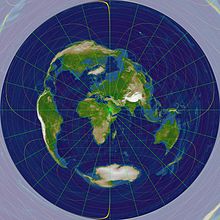Qibla

Qiblah (قبلة, also transliterated as Kiblah) is an Arabic word for the direction that should be faced when a Muslim prays during Salah. Most mosques contain a niche in a wall that indicates the qiblah.
First Qibla;Unlike the biography stories that are composed of traditional rumor compilations, based on text and archaeological research, en:Patricia Crone and Michael Cook hypothesized that the "Masjid al-Haram" was not located in Mecca, but in the north-west Arabian Peninsula.[1]
Canadian archeology and Islamic history researcher Dan Gibson discovered that the oldest mosque, palace and cemetery positionings point to Petra. He found that it was the place where Muhammad and the first Muslims lived, and that the first direction of qibla for the Muslims was facing Petra.[2][3]

References[change | change source]
- ↑ https://dergipark.org.tr/tr/download/article-file/592002
- ↑ Dan Gibson: Qur'ānic geography: a survey and evaluation of the geographical references in the qurãn with suggested solutions for various problems and issues. Independent Scholars Press, Surrey (BC) 2011, ISBN 978-0-9733642-8-6
- ↑ Schumm, Walter R. (2020). "How Accurately Could Early (622-900 C.E.) Muslims Determine the Direction of Prayers (Qibla)?". Religions. 11 (3): 102. doi:10.3390/rel11030102.
